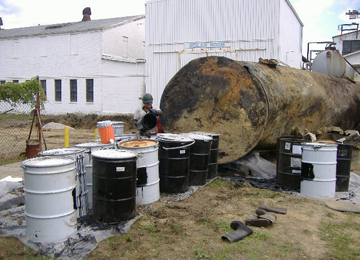Developers and financial institutions can be leery of projects that require redevelopment of contaminated properties because they’re concerned about who will be responsible for site cleanup costs. However, choosing the right team and approach can be the key to successful mitigation and development.
A brownfield property is an abandoned, idled, or underused property known or suspected of being contaminated, and whose redevelopment is impaired due to the potential liability for site cleanup costs. The Brownfields Property Reuse Act was created in 1997 to facilitate redevelopment of contaminated properties.
Many issues are involved with redeveloping brownfield sites. Items of concern include potential liability issues, mitigation costs, financing, adherence to numerous federal, state, and local environmental laws and regulations, limited demand for redeveloped sites, and competition from ‘clean’ sites. Redeveloping a brownfield site hinges on the value of the property after it’s been remediated. Determining an appropriate remediation plan requires teaming with an experienced, well-qualified environmental consultant who will help develop work scopes, project schedules and budgets for environmental assessment and remediation.
Most states have laws that establish a process that can be used by potential purchasers, developers and lenders to redevelop contaminated property while being protected from liability for costs associated with full cleanup. These laws are designed to encourage parties who have no causal connection with a brownfield site’s contamination to provide capital and labor to improve the site without inheriting liability for problems they did not create.
State environmental agencies may require a developer to enter into a Brownfield Agreement, which allows the developer to negotiate reduced cleanup levels and receive liability protection. The developer is only responsible to clean up the property to the extent needed to make it suitable for its intended use, and is limited to specific areas identified. This liability protection is typically extended to parties representing the developer; future owners of the property; persons who occupy the property; and the successors or assigns of any parties associated with the development, including lenders that provide associated financing. Revised land use restrictions can also support less demanding remediation levels. For example, by repurposing an existing multi-family residential site into a commercial property, the change from residential to commercial zoning can greatly reduce remediation requirements and help reduce project development costs.
States that do not have formal brownfield programs may have voluntary response programs that create similar development opportunities. Many states provide assistance with legal and technical requirements and may provide economic incentives.
The following guidelines provide a foundation for developing a brownfield site:
- Choose an environmental consultant experienced with brownfields redevelopment issues and who is familiar with the types of contaminants that may have impacted the site.
- Investigate state brownfields redevelopment program or voluntary cleanup program options. These state programs vary as to legal, technical, and financial support – your consultant should be able to help you understand and successfully manage these requirements.
- Develop a plan to clean up the site with well-defined goals and objectives, then present your plan to the state as the springboard for your site’s brownfield agreement.
- Use land use restrictions and engineering controls when possible instead of performing costly assessment and remediation.
Once development begins, clean up only what is outlined in your agreement. Voluntarily assessing or remediating other contaminated portions of the site can expose you to unnecessary liability.
The Brownfields Property Reuse Act and similar statewide voluntary programs have reduced the risk of developing contaminated sites. As urban properties become more scarce and increase in value, this option warrants the reconsideration of properties that were once considered unattractive for development. Taking advantage of these options can benefit both your community and your bottom line.

